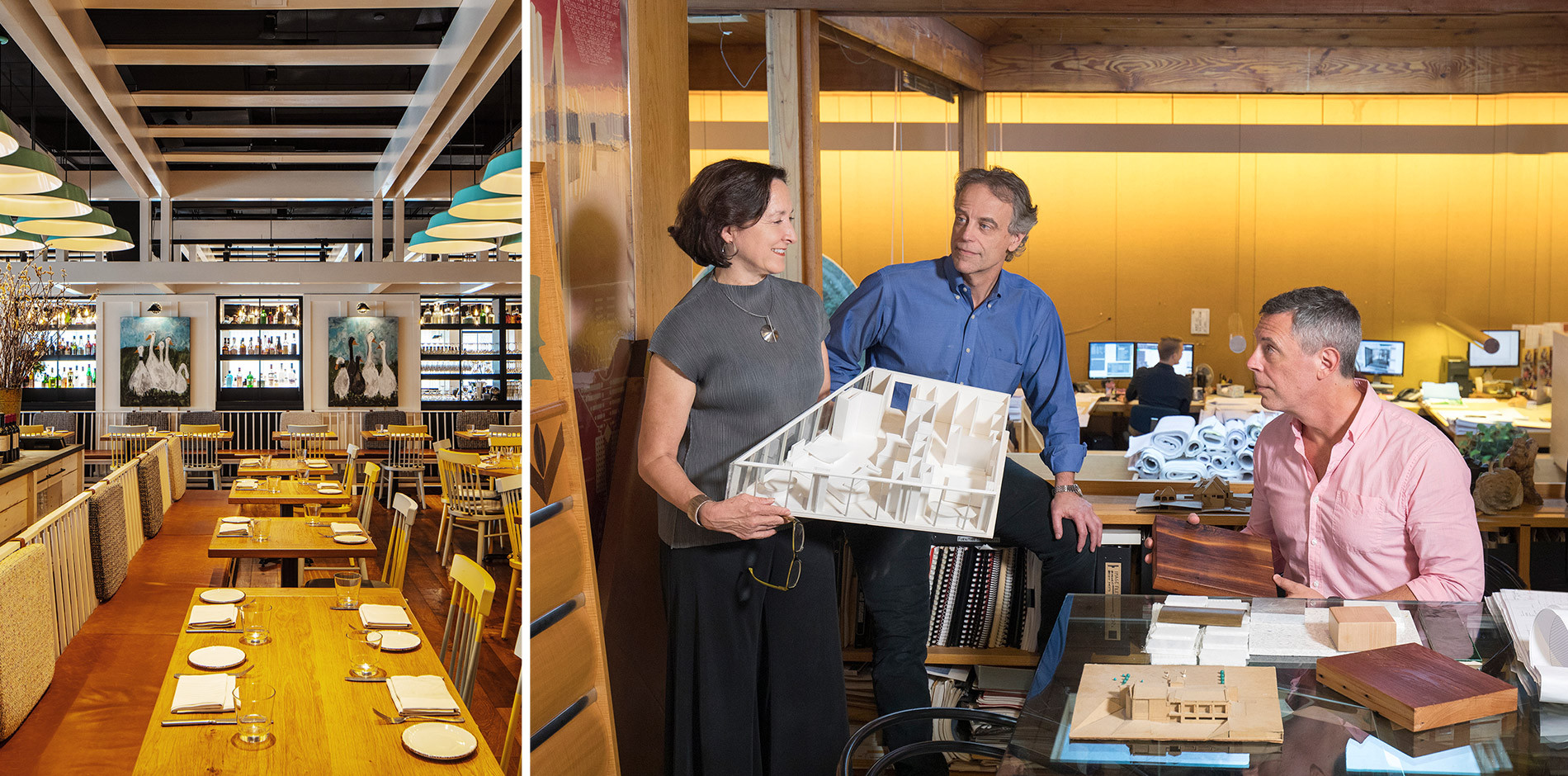Left: Small Batch, Shawmut and Bentel & Bentel’s latest collaboration. Right: Carol, Paul, and Peter Bentel.
Dr. Carol Bentel, Dr. Paul Bentel, Peter Bentel
Partners, Bentel & Bentel
1. Where do you typically find inspiration?
We are a family of architects, raised by architects and grandchildren of craftsmen and women. Our inspiration comes from our engagement with that tradition of design and making things. We are not slaves to tradition, but rather build new insights from our experiences in the past—watching buildings being designed and things being made. We take inspiration from the process of transforming materials into objects and places. That is why our work has such a strong material and craft orientation. Beyond that, we travel and absorb. We bring to our work new ideas based on things we have seen and experienced first-hand. That is why our work tends to be unusual and out of the ordinary. We do not spend a great deal of time in the magazines or showrooms—though we are constantly engaged in research to understand what new technology, manufacturing techniques, and materials have the potential to enhance our work. But our sensibilities filter our engagement with new things so that we see what is new through the eyes of our experiences and the culture those experiences have shaped.
2. What is your favorite part of the project lifecycle?
The design process is the most engaging mentally and so it tends to pass by quickly and without much opportunity for reflection on whether it is enjoyable. As design shifts to the realization of ideas in construction, there is an inherent excitement to see an idea—or perhaps even a dream—become a reality. That transformation of a design as a concept to a design as a reality can sometimes be frustrating because of the time it takes and the many imprecisions which arise through construction. It is not necessarily an easy time, but it is also deeply rewarding as our ideas become a reality. Seeing a design “perform” as a place people inhabit and experience is a joy, especially when our work is well-received—and not just because we revel in that approval but rather because we understand we have made a connection. Making things is a human process and the use of things we make is a fundamental human experience.
3. What led you to work in architecture?
We have all had aspirations as artists—Carol in dance and Paul and Peter in sculpture and painting—which led us to a profession in which planning and aesthetics play equally significant roles. Carol is the daughter of a paper maker. Her world was formed by the proximity to a raw material which is the essential starting point for all designers: the blank page. Paul and Peter are the children of architects and craftsmen. Architecture as the shaping of space and form came naturally to us.
4. What’s one of the most challenging aspects of architecture and how do you face it?
The most challenging aspect of architecture is the transformation of an idea—a fragile and insubstantial idea about how a space should be formed or an object constructed—into the physical thing it must become. So much depends on the ability to translate ideas into physical form, to understand how a building can be made. There are so many possibilities in the way we make things today. And yet, once a direction is assumed—about materials, structure, an aesthetic—preserving the idea, letting it grow and change without excessive compromise, is one of the central challenges of the profession.
5. What’s key to effectively collaborating on a project?
Effective collaboration depends on trust in one’s partners and a willingness to step in and engage in the design discussion and work to make it all come true.
